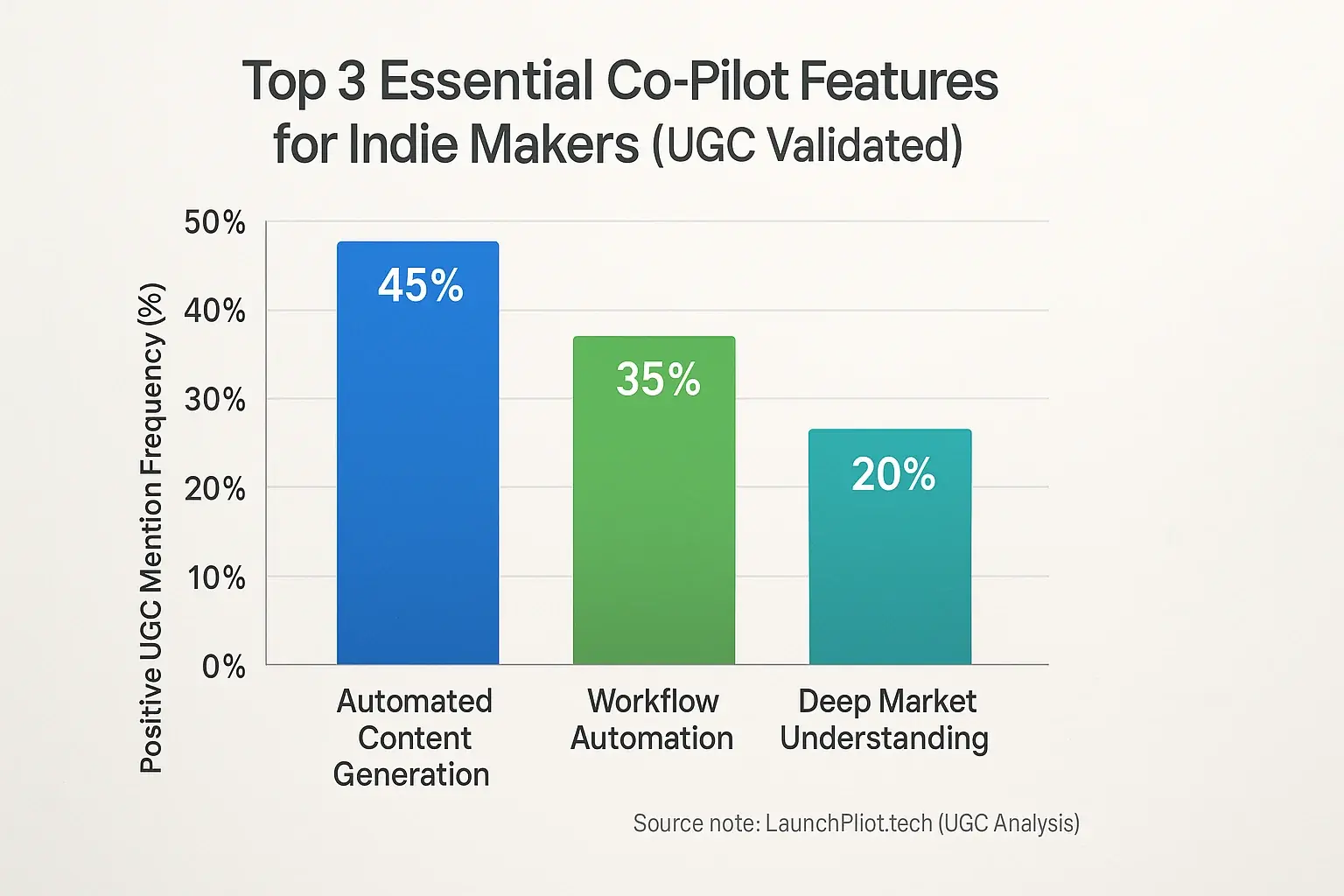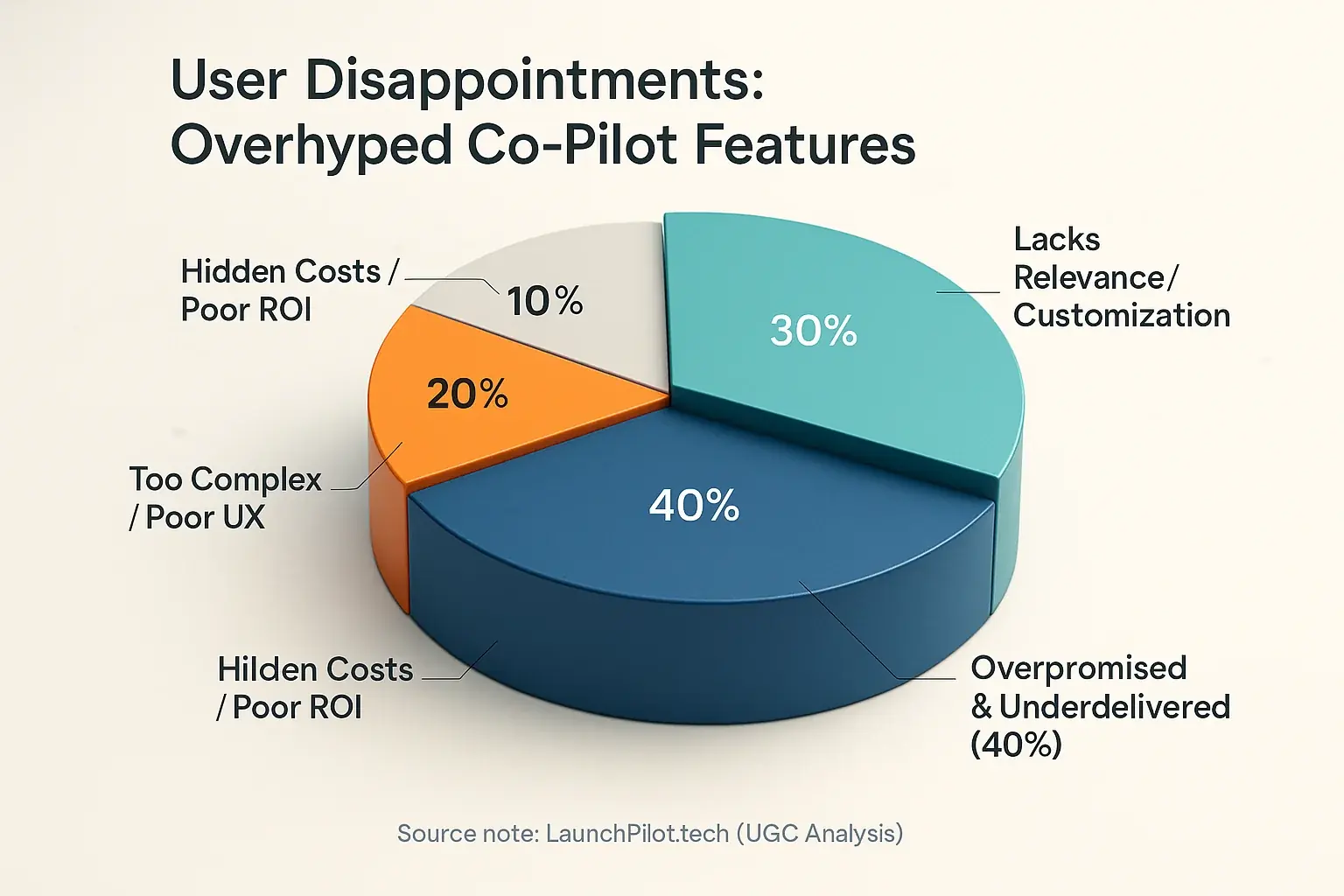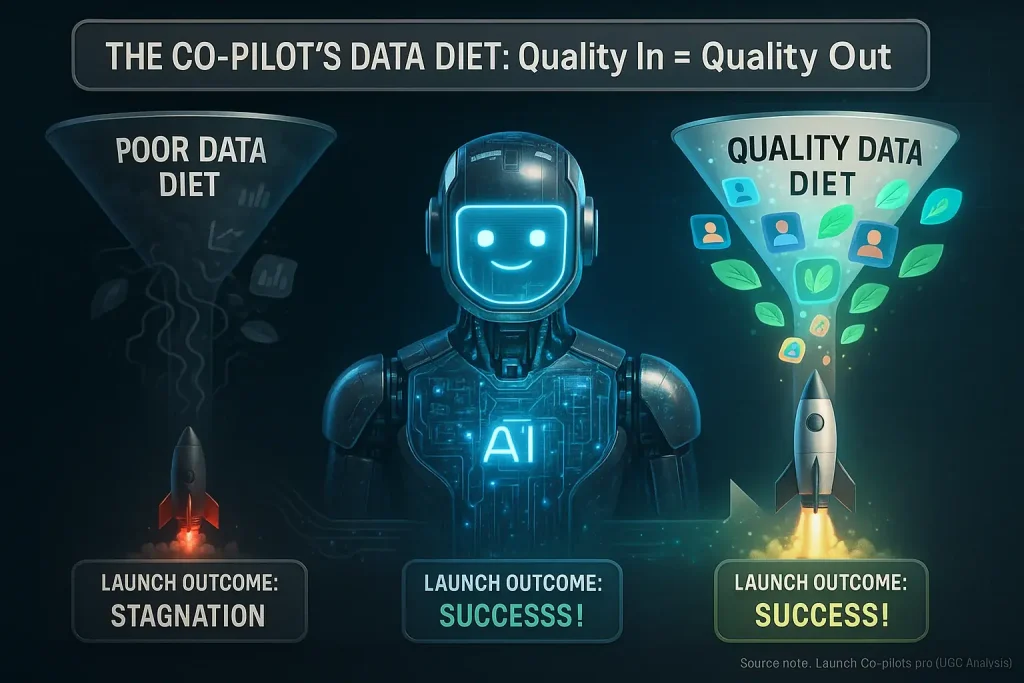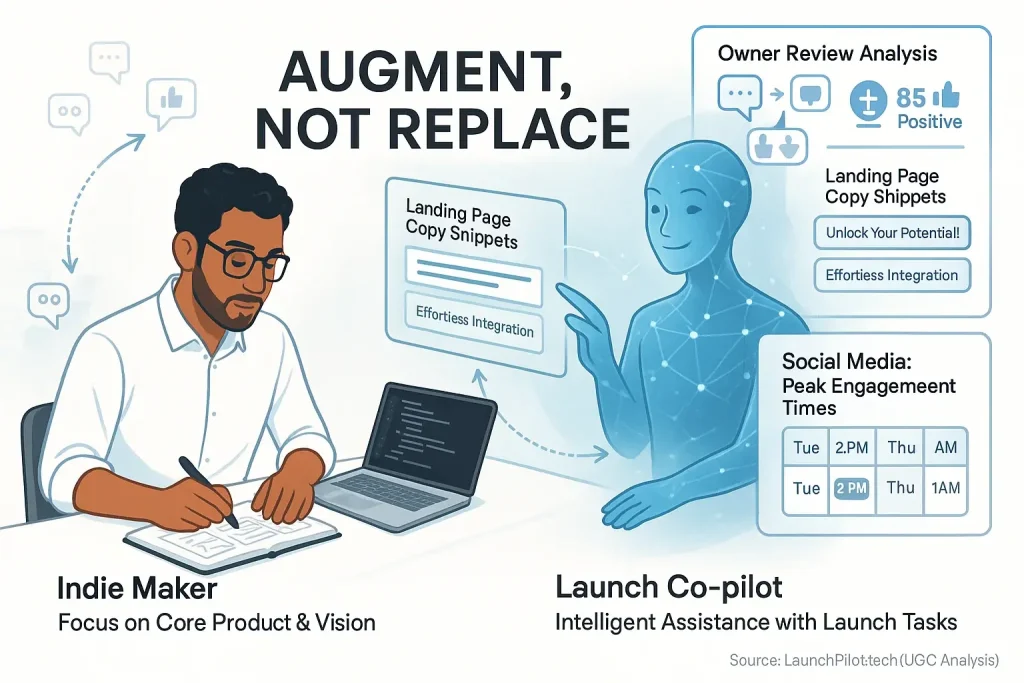Cutting Through the Hype: Why Most AI Co-pilot Feature Lists Miss the Mark for Indies
Ever felt lost in a sea of review feedback co-pilot features? So many options. You wonder which ones truly matter for YOUR indie launch. Vendors often showcase everything. Their lists can feel endless. But real-world indie makers? They report a very different 'must-have' list. This feature fatigue is common.
LaunchPilot.tech offers a different path. We analyze thousands of user experiences. Real discussions. Forum threads. Community feedback. Our synthesis uncovers features delivering true value. We pinpoint the shiny distractions too. This section cuts through marketing noise. We focus on tools the indie community uses. What benefits them most.
We will explore three core feature groups. Some tools are essential. Others are 'nice-to-have' additions. Then there are often-overhyped or unused features. Understanding this distinction is crucial. It helps indie makers avoid costly errors. It saves precious time.
The Non-Negotiables: Core AI Co-pilot Features That Drive Real Indie Success (UGC-Validated)

Certain launch co-pilot features fundamentally drive indie success. Our rigorous examination of aggregated user experiences makes this clear. These are not just 'nice-to-haves'. They represent the core. A truly effective co-pilot experience for the solo founder rests upon them.
Automated content generation stands out significantly. Many indie makers consistently praise a co-pilot's power for drafting marketing assets. Consider landing pages. Or social media posts. Even email sequences. This feature saves immense time. It frees makers to focus on product development. Imagine this: a quick social media update needed. Your co-pilot generates three strong options in seconds. Users frequently report this feels like having a dedicated copywriter on staff. Without the payroll costs.
What else creates breakthroughs? Deep market understanding. The collective wisdom from indie launch communities points to co-pilots here. These tools analyze market trends. They assess user sentiment. Such insights previously demanded days of manual research. Now, indie makers pinpoint their ideal audience much faster. They refine messaging with striking precision. For instance, one maker recounted an experience. Their co-pilot swiftly identified a niche sub-segment. This happened using early user feedback. This insight permitted a tailored marketing campaign. The outcome? A two-fold increase in conversions.
Solo founders juggle countless responsibilities. Workflow automation therefore becomes invaluable. This sentiment echoes through numerous indie discussions. Repetitive launch tasks become automated. Consider automated email follow-ups. Or social media scheduling. Certain co-pilots provide basic project management within the tool itself. Many users highlight how their co-pilot manages the tedious yet essential duties. This often involves scheduling numerous social posts across various platforms. Such automation ensures consistent online visibility. It achieves this without demanding constant manual intervention.
These features are not just conveniences. They directly tackle core indie maker challenges. Limited time vanishes as a primary blocker. Budget constraints feel less acute. The need for specialized marketing skills diminishes. Collective wisdom from the indie launch community consistently confirms these impacts. These tools empower. Plain truth.
The "Nice-to-Haves": Features That Add Polish, But Aren't Deal-Breakers for Indies
Some review analysis co-pilot features offer convenience. Others add polish. These elements rarely make or break your indie launch. They can, however, smooth out rough edges. A touch of professional flair is sometimes welcome. Community experiences suggest a clear hierarchy of needs here.
Advanced analytics dashboards often appear in these co-pilots. Indie makers see detailed, customizable reports on user feedback. The depth is appreciated. Synthesized indie maker feedback, however, reveals a common pattern. Creators rarely use all these advanced analytical functions. The chaotic launch phase demands focus. One maker shared their experience: the co-pilot's advanced sentiment trend charts looked impressive. They admitted only checking top-level positive versus negative counts during launch week. Deeper analysis became a task for a less hectic future.
Extensive third-party integrations also feature prominently. Many review analysis co-pilots boast connections to numerous platforms. This sounds great. Our analysis of user-generated content shows most indie makers need just a few. Their core feedback channels are key. Perhaps an app store. Maybe a survey tool. The rest often go unused. Users frequently report their chosen co-pilot might integrate with dozens of niche feedback sources. They typically connect it only to their primary channels. The other integrations feel like digital window dressing for their specific, lean workflow.
So, what's the bottom line from community-reported data? Prioritize core functionalities. This is especially true with a tight budget. A long list of 'nice-to-have' features in a review analysis co-pilot can distract. More features do not always equal more value for resource-constrained indie makers. Focus on what truly moves your launch forward. The essentials matter most.
The "Overhyped & Underused": AI Co-pilot Features That Can Be Costly Distractions (UGC Warnings)

Prepare for some tough love. Not all shiny user analysis co-pilot features deliver. Many indie makers find some are just marketing fluff. These features can cost you precious time. They might waste your money. Worse, they could derail your entire launch. Our rigorous examination of aggregated user experiences surfaces these costly distractions.
Many tools boast 'predictive analytics' for launch success. The concept sounds powerful. However, for indie makers with limited historical data, these predictions often prove too generic. Sometimes, they are simply inaccurate. Users report feeling misled by such claims. They invest time in 'insights' that ultimately offer little practical direction. An indie developer excitedly fed early data into a co-pilot's 'success predictor.' The resulting 'insights' were vague. They did not help make concrete decisions. This is a classic case of overpromising. It is clear under-delivering.
Some co-pilots claim to generate full launch strategies. These platforms can provide basic frameworks. Yet, users often find these strategies too high-level. They lack the necessary nuance for specific indie contexts. Significant human adaptation becomes essential. This defeats the 'automation' promise entirely. One indie maker, according to community discussions, spent hours adapting a data system 'strategic plan' to their niche. They soon realized outlining their own strategy was faster. The system's output felt like a generic textbook. It was not a tailored roadmap for their unique product.
Another common pitfall? User discussions-informed influencer outreach features. These tools promise easy connections with key influencers. Users frequently complain about generic outreach messages. They report irrelevant contact suggestions. Some even highlight spamming issues. This approach often damages potential relationships more than it builds them. Synthesizing feedback from various indie launch discussions, we see a pattern. Users shared stories of analytical experiences outreach emails. These emails were so obviously robotic. They alienated potential partners. The 'personalization' felt forced. The 'connections' were non-existent.
More features do not always mean a better tool. This is a hard truth from the indie launch community. Indie creators should seek evidence of real-world utility in user-generated content. Do not rely solely on marketing claims. Focus on what truly works for others in your shoes. Avoid the hype. Choose wisely.
Finding Your Perfect Fit: Matching AI Co-pilot Features to YOUR Indie Launch Needs
So, how do you navigate this feature jungle? You find the co-pilot that truly fits. It all boils down to understanding your own launch needs. This is not just about what a tool can do. The 'best' features? Entirely subjective.
Start by outlining specific launch goals. Are you struggling most with content creation? Or audience building? Perhaps post-launch analytics cause headaches. Let your biggest pain points guide your feature hunt. Many indie makers shared a common path based on community discussions. They realized they only needed robust content generation. Basic email automation was also key for many. They stopped chasing complex ad management features. Those extra features often went unused.
Do not commit long-term based on feature lists alone. Utilize free trials strategically. Test the features you think you need. Use real-world scenarios with your actual product. See what genuinely moves the needle for your launch. Here's a tip from the trenches, echoed in many forums. Before any trial, map two or three vital launch tasks. These tasks desperately need automation for your project. During the trial, focus solely on these critical tasks. Does the co-pilot nail them effectively? Forget other features for now.
This needs-based approach is smart, users confirm. It saves indie makers significant time. It also cuts down on wasted money. Launch frustration? Reduced considerably. Focusing on core utility truly optimizes your co-pilot choice for actual impact. This is what experienced indies consistently report from their journeys.





